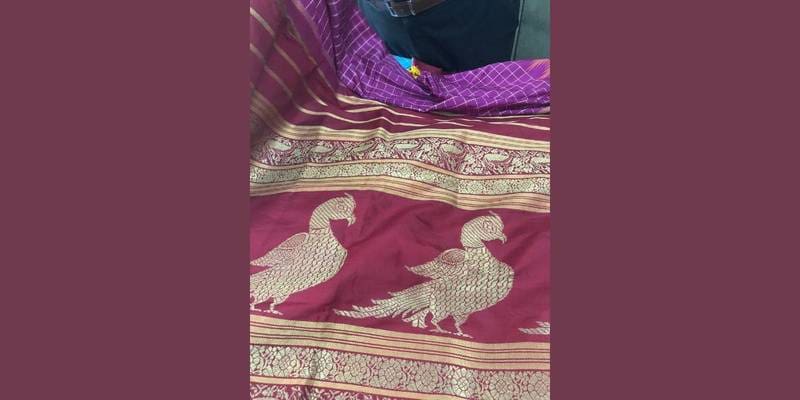In the late 1930s, Rukmini Devi Arundale, dancer, Theosophist and founder of Chennai-based Kalakshetra Foundation, introduced the kili (parrot) motif on the Kalakshetra sari. Today, this design has found its way into the Kerala kasavu, courtesy Kochi-based designer ShruthiPrajosh, as part of her Onam Edit.
A textile enthusiast, Shruthi has worked with the handloom weavers of Kuthampilly in Thrissur for 13 years and launched the Kaithiri project to bring round-the-year work to the weavers. “This is a dream come true,” she says. “I have been speaking to the weavers about this design for the last six months.” She says the younger weavers (around 30% of the Kuthampilly weaving community) are eager to experiment with new designs.
Shruthi has imported motifs from different traditions, cultures and mythology of India on to the Kerala kasavu, which is usually worn only during the festivals in the state. Four years ago, she designed a sari with the Tree of Life motif. Other innovations include kasavu saris in pastel shades (to be worn on different occasions), adding the orange selvedge to the border and adding the phodakhumba motif (the triangular-shaped roof) from temple architecture.
“Six years ago, we introduced kattam (checks), vara (stripes) and techniques like the ‘muthukattam’ from Kanjeevaram, in the body of the kasavu. We took technical help, in making the kili card, inviting a weaver from Coimbatore to work with us at Kuthampilly. As a weave, the kattam require precision and correct calculation,” says Shruthi. The weaver does the mental math to calculate the required thread count.
Shruthi explains that the 200-odd weavers in Kuthampilly originally hailed from Tamil Nadu. “Around 500 years ago, the local king brought these weavers here and they settled down. They speak a mix of Tamil, Malayalam and Konkani.”
According to Chennai-based textile researcher Sreemathy Mohan, the original parrot motif was first found in the costume Rukmini Devi Arundale wore when she enacted the dance drama, KutralaKurvinji. “It was a cotton sungadi and the parrots on it were huge.” One of the most popular motifs it was also crafted on Venkatagiri saris and the Ashavalli brocades of Gujarat.
A motif of love
The parrot has an important role in Tamil culture and appears in Indian mythology as a learned sage. It is also a motif of love and therefore forms an important pattern in bridal trousseau saris.

